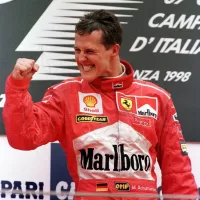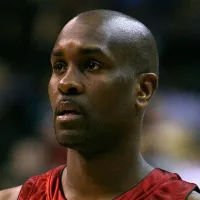Bugatti was a French high-performance automobile manufacturer founded in 1909 by Italian-born Ettore Bugatti in Molsheim, Alsace (then part of Germany). Renowned for their exquisite design and racing success, iconic models include the Type 35 Grand Prix cars, the luxurious Type 41 "Royale", the stylish Type 57 "Atlantic", and the Type 55 sports car. Bugatti cars are known for their beauty and performance.
1909: Company Founding
In 1909, Automobiles Ettore Bugatti, a French manufacturer of high-performance automobiles, was founded in Molsheim, Alsace, by Italian-born industrial designer Ettore Bugatti.
October 1919: Paris Motor Show Exhibition
In October 1919, Bugatti exhibited three light cars at the 15th Paris motor show: a "Type 13" with a racing body, a "Type 22", and a "Type 23".
1924: Bugatti Type 35 Development
In 1924, the Bugatti Type 35 was developed, and it participated in its first Grand Prix in Lyon.
1925: Sinking of Bugatti Brescia Type 22
In 1925, the Bugatti Brescia Type 22 sank to the bottom of Lake Maggiore.
1925: Targa Florio Victory
Starting in 1925, Bugattis won the Targa Florio for five years straight.
1929: Targa Florio Victory
In 1929, Bugattis won the Targa Florio for five years straight.
1929: Monaco Grand Prix Win
In 1929, a privately entered Bugatti won the first ever Monaco Grand Prix.
1937: Ownership of Bugatti Type 57S Atalante
In 1937, British race car driver Earl Howe originally owned Bugatti Type 57S Atalante.
1937: Le Mans Win
In 1937, Jean-Pierre Wimille and Robert Benoist won the 24 hours of Le Mans in a Bugatti.
August 1939: Death of Jean Bugatti
On August 11, 1939, Jean Bugatti died while testing a Type 57 tank-bodied race car near the Molsheim factory.
1939: Le Mans Victory
In 1939, Jean-Pierre Wimille and Pierre Veyron won Le Mans with one car and meager resources.
1939: Death of Jean Bugatti
In 1939, the death of Ettore Bugatti's son Jean meant that there was no successor to lead the factory.
1940: Death of Carlo Bugatti
In 1940, Carlo Bugatti (Ettore's father) passed away.
August 1947: Death of Ettore Bugatti
On August 21, 1947, Ettore Bugatti died, leading to further decline of the business. A 375 cc supercharged car development was stopped.
1947: Death of Ettore Bugatti
The death of Ettore Bugatti in 1947 proved to be a severe blow to the marque.
October 1952: Last Appearance at Paris Motor Show
In October 1952, Bugatti made its last appearance as a business in its own right at the Paris Motor Show.
1952: Cessation of Operations
In 1952, the original Bugatti ceased operations.
1963: Sale to Hispano-Suiza
In 1963, Bugatti, which continued manufacturing airplane parts, was sold to Hispano-Suiza.
1963: Company Purchased
In 1963, the company was purchased for its airplane parts business.
1965: Turin Motor Show Appearance
In 1965, a show version of Virgil Exner's Bugatti "Revival Cars" project, built by Ghia using the last Bugatti Type 101 chassis, was shown at the Turin Motor Show.
1968: Snecma Takeover
In 1968, Snecma took over Hispano-Suiza.
1977: Merger into Messier-Bugatti
In 1977, Snecma merged Messier and Bugatti into Messier-Bugatti.
1987: Brand Acquisition
In 1987, Romano Artioli acquired the Bugatti brand and established Bugatti Automobili S.p.A.
1988: Factory Construction Begins
In 1988, construction of the Bugatti factory began in Campogalliano, Modena, Italy, alongside the development of the first model.
1989: New Bugatti Plans Presented
In 1989, the plans for the new Bugatti revival were presented by Paolo Stanzani and Marcello Gandini.
June 1990: Materazzi Replacement
In June 1990, Nicola Materazzi replaced Paolo Stanzani as Artioli clashed with Stanzani over engineering decisions.
1990: Factory Inauguration
In 1990, the Bugatti factory in Campogalliano, Modena, Italy, was inaugurated.
1992: Materazzi Departure
In late 1992, Nicola Materazzi left his role as Director.
August 1993: Purchase of Lotus Cars
On August 27, 1993, Romano Artioli purchased Lotus Cars from General Motors.
1993: Presentation of EB112 Prototype
In 1993, Bugatti presented a prototype large saloon called the EB112.
1994: Forghieri technical director
From 1993 through 1994 Mauro Forghieri served as Bugatti's technical director.
September 1995: Cessation of Operations
In September 1995, poor economic conditions caused Bugatti to fail and operations ceased.
1997: Dauer Racing Purchase
In 1997, Dauer Racing purchased the EB110 license and remaining parts stock to produce five more EB110 SS vehicles.
1999: Concept Vehicle Debuts
In 1998 and 1999, Bugatti Automobiles showcased the EB118, EB 218 and 18/3 Chiron concept vehicles.
1999: Bugatti 18/3 Chiron Concept Car
In 1999, Bugatti Automobiles S.A.S. named the Bugatti 18/3 Chiron concept car in honor of Louis Chiron.
September 2005: Bugatti Veyron Production Begins
In September 2005, Bugatti Automobiles S.A.S. began assembling the Bugatti Veyron 16.4 in Molsheim, France.
July 2009: Recovery of Bugatti Brescia Type 22
On July 10, 2009, a 1925 Bugatti Brescia Type 22 was recovered from Lake Maggiore after 75 years.
2009: Discovery of Rare Bugatti
In 2009, relatives of Harold Carr found a rare 1937 Bugatti Type 57S Atalante while cataloguing his belongings after his death.
2010: Auction of Bugatti Brescia Type 22
In 2010, the Mullin Museum bought the 1925 Bugatti Brescia Type 22 at auction for $351,343.
2011: Dauer Stops Production
In 2011, Dauer stopped producing cars.
February 2015: Last Veyron Sold
On February 23, 2015, Bugatti sold its last Veyron Grand Sport Vitesse, named La Finale.
March 1, 2016: Bugatti Chiron Unveiling
On March 1, 2016, the Bugatti Chiron was first revealed at the Geneva Motor Show.
February 2024: Announcement of Chiron Successor
In February 2024, Bugatti announced the successor to the Chiron, which will use a V16 hybrid-electric powertrain.
June 2024: Chiron Successor Confirmed as Bugatti Tourbillon
In June 2024, the successor to the Chiron was confirmed as the Bugatti Tourbillon.
Mentioned in this timeline
California is a U S state on the Pacific Coast...

Michael Schumacher is a retired German Formula One racing driver...
Germany officially the Federal Republic of Germany is a Western...
Monaco officially the Principality of Monaco is a sovereign city-state...
France officially the French Republic is primarily located in Western...

A car also known as an automobile is a wheeled...
Trending

Simon Cowell is a prominent English television personality and businessman recognized for his role as a judge on various talent...

7 months ago Gary Payton Reflects on Jordan Matchup and Hypothetical Stats in Today's NBA

11 days ago Spurs Defeat Nuggets in Thrilling Game, Mavericks Face Nuggets

22 days ago Michael Douglas and Catherine Zeta-Jones Celebrate 25 Years of Marriage with Throwbacks
Luke Kornet is an American professional basketball player currently playing for the San Antonio Spurs in the NBA He's a...

6 months ago Jack Black's Minecraft Movie Sets Premiere on HBO Max, June 20, 2025
Popular

Candace Owens is an American conservative political commentator and author...

Ilhan Omar is an American politician currently serving as the...

XXXTentacion born Jahseh Dwayne Ricardo Onfroy was a controversial yet...

Tom Cotton is an American politician and Army veteran currently...
The Kennedy Center Honors are annual awards recognizing individuals and...

Kelsey Grammer is an accomplished American actor producer and singer...